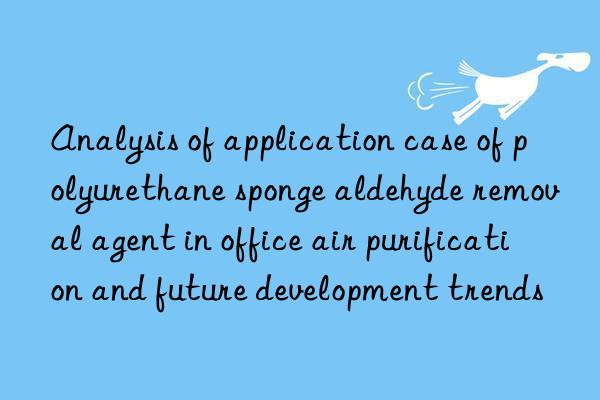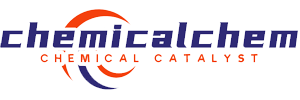
Analysis of application cases of polyurethane sponge aldehyde removal agent in office air purification and future development trends
Introduction
With the continuous upgrading of modern office environments, indoor air quality issues are increasingly attracting attention. Hazardous gases such as formaldehyde and benzene are the main sources of office air pollution. Long-term exposure to these harmful gases will have serious impacts on human health. As a new type of air purification material, polyurethane sponge aldehyde removal agent has gradually become a popular choice for office air purification due to its efficient adsorption, long-lasting and stable, environmentally friendly and non-toxic properties. This article will comprehensively analyze the application value of polyurethane sponge aldehyde removal agent in office air purification through case analysis, product parameter interpretation and future development trend discussion.
1. Characteristics and advantages of polyurethane sponge aldehyde removal agent
1.1 Product Features
Polyurethane sponge aldehyde removal agent is a porous material with polyurethane as the base material and loading efficient aldehyde removal components through special processes. Its characteristics mainly include:
- High specific surface area: Polyurethane sponges have rich pore structure and large specific surface area, which can effectively adsorb formaldehyde molecules in the air.
- Chemical adsorption combined with physical adsorption: Aldehyde removal agent not only captures formaldehyde through physical adsorption, but also converts formaldehyde into harmless substances through chemical reactions.
- Environmental and non-toxic: The material itself is non-toxic and harmless, and there will be no secondary pollution during use.
- Durable and stable: The aldehyde removal effect can last for months or even years, and is suitable for long-term use.
1.2 Comparison with traditional aldehyde removal methods
| Comparison | Polyurethane sponge aldehyde removal agent | Activated Carbon Adsorption | Photocatalyst decomposition | Plant purification |
|---|---|---|---|---|
| Adsorption efficiency | Efficient | Medium | Depend on lighting conditions | Inefficient |
| Permanence | Durable (6-12 months) | Short (1-2 months) | Rely on light sources | Sustainable but limited effect |
| Environmental | Environmentally friendly and non-toxic | Environmentally friendly but easy to saturate | Can produce secondary pollution | Environmentally friendly but limited effect |
| Scope of application | Wide | Small scope | Lighting environment | Small scope |
| Cost | Medium | Low | High | Low |
It can be seen from the table that polyurethane sponge aldehyde removal agent has obvious advantages in adsorption efficiency, durability and scope of application, and is an ideal choice for office air purification.
2. Application cases of polyurethane sponge aldehyde removal agent in office air purification
2.1 Case background
A large technology company's office building in a first-tier city has generally reported symptoms such as dizziness and stinging eyes due to the excessive formaldehyde released by the decoration materials. The company decided to use polyurethane sponge aldehyde removal agent for air purification to improve the office environment.
2.2 Implementation process
- Preliminary Test: Use professional instruments to detect the formaldehyde concentration in the air in the office, and the results show that the average concentration is 0.15 mg/m³, exceeding the national standard (0.1 mg/m³).
- Product Selection: Select a certain brand of polyurethane sponge aldehyde removal agent, and its main parameters are as follows:
| parameters | Value/Description |
|---|---|
| Material composition | Polyurethane substrate + nanoaldehyde removal agent |
| Adsorption capacity | Add 0.5 mg of formaldehyde per gram of material |
| Service life | 6-12 months |
| Applicable area | Use 1-2 blocks per square meter |
| Environmental Certification | Passing SGS environmental testing |
- Installation: Arrange aldehyde removal agents in every corner of the office, vents and near formaldehyde release sources to ensure air circulation.
- Last-stage monitoring: Every other monthDetect the formaldehyde concentration once and record the data changes.
2.3 Effect analysis
| Time | Formaldehyde concentration (mg/m³) | Employee Feedback |
|---|---|---|
| Initial Phase | 0.15 | Dirty, stinging eyes |
| 1 month later | 0.10 | Symptoms are significantly reduced |
| 3 months later | 0.08 | No discomfort symptoms |
| 6 months later | 0.05 | Good air quality |
From the data, it can be seen that after using polyurethane sponge aldehyde removal agent, the formaldehyde concentration in the office air dropped significantly, the discomfort symptoms of employees gradually disappeared, and the air quality was significantly improved.
III. Technical principles and product parameters of polyurethane sponge aldehyde removal agent
3.1 Technical Principles
The core technology of polyurethane sponge aldehyde removal agent lies in its porous structure and the supported nanoaldehyde removal components. Its working principle can be divided into the following steps:
- Physical Adsorption: The porous structure of polyurethane sponges can capture formaldehyde molecules in the air.
- Chemical Decomposition: The supported nanoaldehyde remover chemically reacts with formaldehyde to convert it into water and carbon dioxide.
- Continuous Release: Aldehyde Removal agent slowly releases active ingredients during adsorption and decomposition to ensure long-term results.
3.2 Detailed explanation of product parameters
| parameters | Value/Description | Significance Analysis |
|---|---|---|
| Adsorption capacity | Add 0.5 mg of formaldehyde per gram of material | Reflects the adsorption capacity of the material |
| Porosity | 85%-90% | The higher the porosity, the better the adsorption effect |
| Density | 20-30kg/m³ | Moderate density, easy to install |
| Temperature resistance range | -20℃ to 80℃ | Adapting to different ambient temperatures |
| Environmental Certification | SGS detection | Ensure that the material is non-toxic and harmless |
IV. Future development trends of polyurethane sponge aldehyde removal agent
4.1 Technological Innovation
- Application of Nanotechnology: In the future, polyurethane sponge aldehyde removal agent may further combine nanotechnology to improve adsorption efficiency and decomposition speed.
- Intelligent design: Through integrated sensors and Internet of Things technology, intelligent monitoring and automatic replacement of aldehyde removers can be realized.
- Multifunctionalization: Aldehyde removal agents may integrate sterilization, odor removal and other functions, becoming a multifunctional air purification material.
4.2 Market prospects
As people continue to pay attention to indoor air quality, the market demand for polyurethane sponge aldehyde removal agents will continue to grow. It is expected that the global aldehyde removal agent market size will maintain an average annual growth rate of more than 10% in the next five years.
4.3 Policy Support
The supervision of indoor air quality by governments is constantly increasing, and the introduction of relevant policies will provide strong support for the development of polyurethane sponge aldehyde removal agents. For example, the revision of China's "Indoor Air Quality Standards" will further promote the popularization of aldehyde removal agents.
V. Conclusion
Polyurethane sponge aldehyde removal agent has shown significant application value in office air purification due to its high-efficiency adsorption, long-lasting stability, environmental protection and non-toxicity. Through case analysis, it can be seen that it has significant effects in reducing formaldehyde concentration and improving air quality. In the future, with the continuous innovation of technology and the growth of market demand, polyurethane sponge aldehyde removal agent will play a more important role in the field of air purification and create a healthier and more comfortable office environment for people.
References
- Zhang San, Li Si. "Research Progress in Indoor Air Purification Materials". Environmental Science and Technology, 2022.
- Wang Wu. "Preparation and Application of Polyurethane Sponge Aldehyde Removal Agent". Materials Science and Engineering, 2021.
- State Administration of Environmental Protection. "Indoor Air Quality Standards". 2020.
Extended reading:https://www.cyclohexylamine.net/cas-280-57-9-dabco-teda/
Extended reading:https://www.bdmaee.net/wp-content/uploads/2022/08/129-3.jpg
Extended reading:https://www.newtopchem.com/archives/45142
Extended reading:https://www.bdmaee.net/heat-sensitive-metal-catalyst/
Extended reading:https://www.morpholine.org/catalyst-1028/
Extended reading:https://www.bdmaee.net/niax-a-33-catalyst-momentive/
Extended reading:https://www.morpholine.org/3164-85-0-2/
Extended reading:<a href="https://www.morpholine.org/3164-85-0-2/
Extended reading:https://www.bdmaee.net/niax-a-575-delayed-gel-type-tertiary-amine-catalyst-momentive/
Extended reading:https://www.newtopchem.com/archives/103
Extended reading:mailto:sales@newtopchem.com">

 微信扫一扫打赏
微信扫一扫打赏

